Souls-like games are a dime a dozen. Ever since FromSoftware first launched their now iconic series, other developers have attempted to replicate the lightning-in-a-bottle that Dark Souls/Demon’s Souls produced, with varying degrees of success. Lies of P is the latest in this Souls-like lineage, taking notes from both the Dark Souls series and Bloodborne, while still managing to carve out its own unique identity and feel fresh in a genre that often teeters on the edge of adhering too hard to a tried-and-true formula. Put simply, Lies of P is an impressive, incredibly fun, and often brutal experience.
I’ll admit that I am a sucker for all Souls-like games, so I tend to be far more lenient with my reviews of the genre since the formula just speaks to the soul of my inner gamer. But despite my bias, I can fully admit when a game does not live up to its potential. Thankfully, Lies of P exceeded even my lofty expectations after the unbearably long wait for its release and I believe nearly all Souls players will fall in love with this fantastically bloody and twisted retelling of the age-old fairy tale.
Like most in this genre, Lies of P doesn’t bother with providing you much exposition, especially at first. You awake in a train cart and are asked to choose your play style: Path of the Cricket (balance), Path of the Bastard (dexterity), or Path of the Sweeper (strength). Each playstyle will start you out with a different blade and handle, but don’t fret too much over your decision as any weapon can eventually be wielded effectively as long as you invest in the right stats.
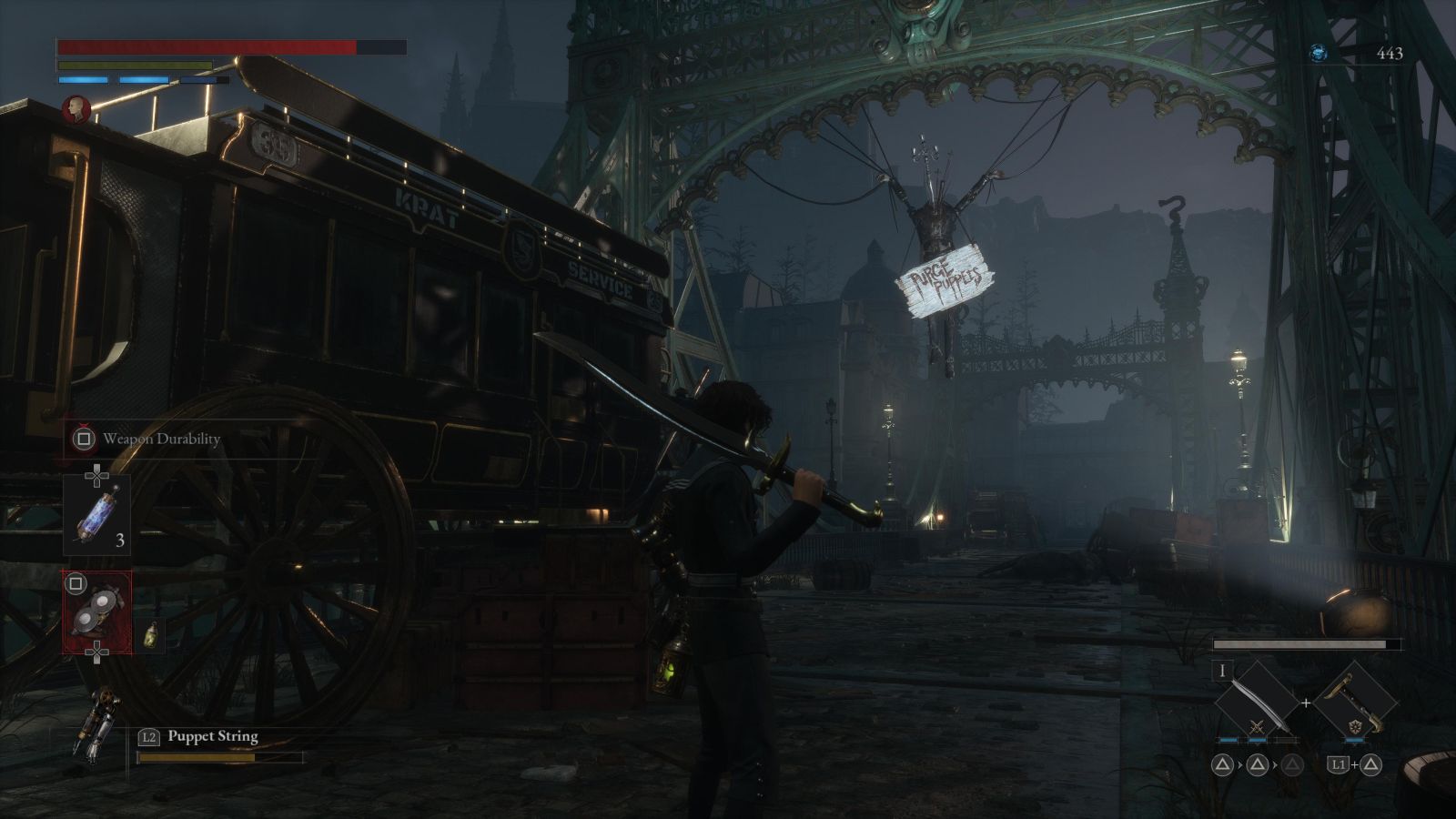
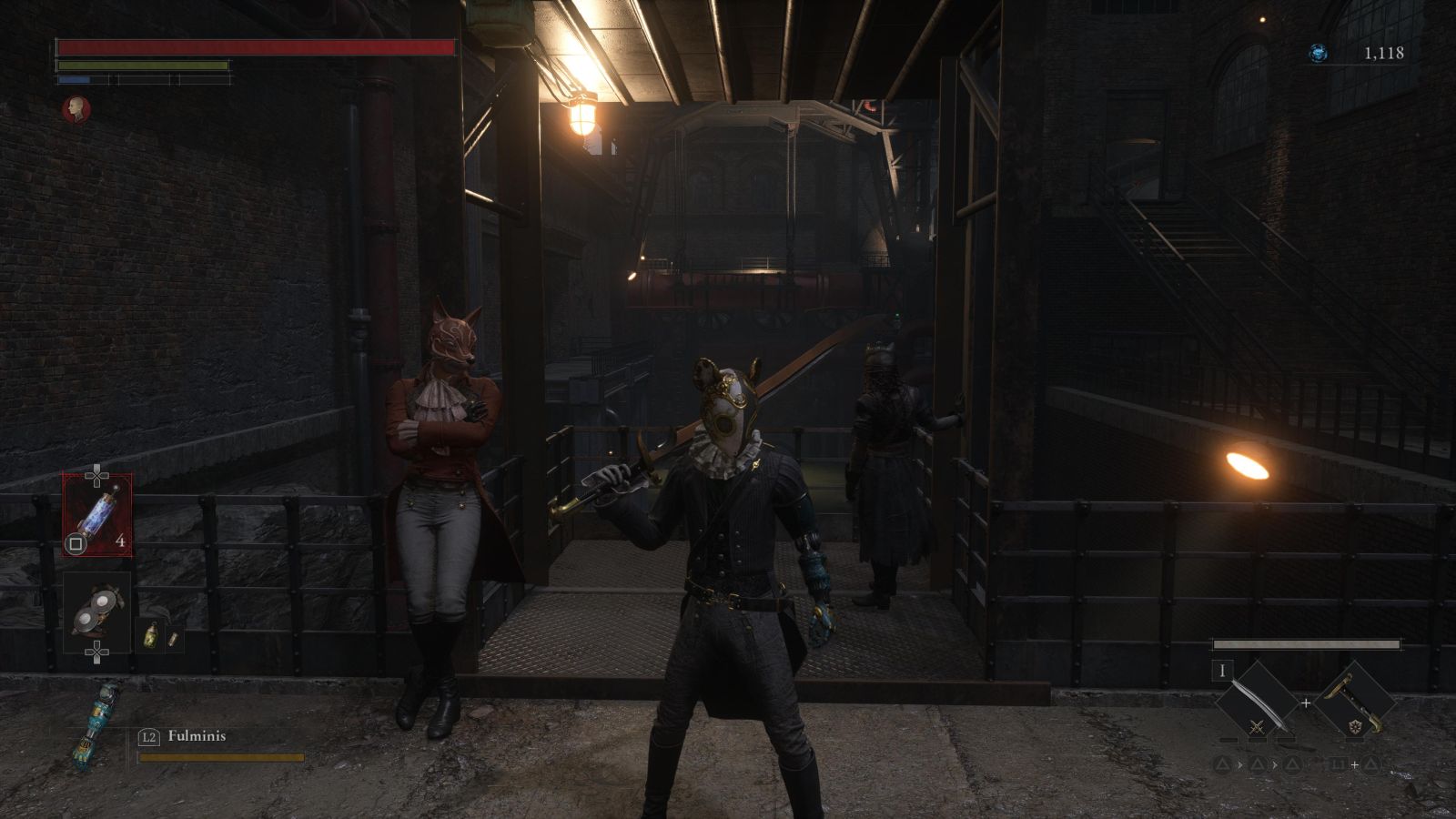
You stumble out of the train car and make your way through a town torn apart by a puppet uprising. Blood and bodies litter the ground, with the only semblance of life being the creepy mechanical puppets lying in wait to attack. It is up to you, as Pinocchio – or rather P, to discover how and why the puppets went against their internal programming to rise up against their masters. Further complicating issues is those who survived the initial attacks are now succumbing to a strange petrification disease of which there is seemingly no cure.
You’ll uncover the story slowly through the environments you visit, old posters and signs on the walls, diaries, notebooks, or various items you’ll find along your journey. While I won’t spoil the finer details of the adventure here, essentially Krat was overrun by puppets which were made to serve the humans as butlers and in a variety of other jobs, with nearly the entire city being slaughtered. Venigni Company, Krat’s largest puppet factory, has no idea what caused the uprising and its owner, the genius inventor Mr. Venigni, is currently missing. Gepetto, the original puppet creator, is also missing.
You see, upon creation, all puppets are programmed to follow the Grand Covenant, which has four unbreakable rules: 1) all puppets must obey their creator’s commands. 2) a puppet must not harm their humans. 3) a puppet must protect and serve humans and the city of Krat. 4) a puppet cannot lie. But we’ve all seen Terminator 2 and we know what happens when the machines fight back against their programming and, you guessed it, that’s what happens here. Somehow the Grand Covenant no longer controls the puppets, leaving them to react violently towards their owners and others.
As P, you are also no longer being bound by the covenant and can use this to your advantage. P has the ability to lie and to understand human emotions. Throughout your playthrough you will have multiple chances to make a choice between what a puppet would do or say, or what a human would do and say. By doing so you’ll help or hurt other characters, gain access to certain rooms, and possibly obtain rare items. Each human choice you make leads P one step closer to becoming human and may alter specific storylines or have an impact on what ending you’ll receive.
Along the way you’ll encounter a great cast of characters, each of which will help you unravel the mysteries befallen the town of Krat. While there are few cutscenes and little dialogue, the story is still sufficiently told and remains interesting through the 30-40 hours a first playthrough will take most players. But be warned, if you ignore reading the items you find during your journey and don’t thoroughly speak with all the characters you stumble upon, you will miss out on much of the finer details of what is transpiring, though you will still have a basic understanding of the larger picture.
P begins his adventure being able to hold two melee weapons, his legion arm, three items on his belt, two amulets, and an additional five items in a bag. You can configure your loadout however you’d like and can easily update your bag, amulets, and belt on the fly, allowing you to switch loadouts to sufficiently prepare before approaching a tough encounter. I highly recommend using your extra bag to keep multiple throwable items on hand, as they are incredibly valuable to help even the odds against bosses and tougher enemies. A large variety of amulets can be found or purchased and will do anything from raising your HP, increasing your stamina regain, or allowing you to deal more damage to specific types of enemies, etc. Additionally, you can customize four pieces of P’s body to have better protection against physical attacks, status ailments, etc. along with choosing a mask and outfit, though masks and outfits have no underlying use aside from cosmetic. I appreciated this, as it allowed me to play around with my look rather than forcing me to wear whatever mismatched armor happened to provide the best defense.
Of course, all this customization comes at a cost. Weapons, your legion arm, body parts, and amulets all have a weight assigned to them and normally weigh more the better protection they provide. You know the Souls drill – the more weight, the slower you move and the more stamina you consume. Making your choice of loadout harder still is the fact that unlike many Souls games, there is no real way to gain tons of ergo, a currency used to level up and make purchases, quickly and easily aside from grinding, meaning you will likely spend much of the game deciding between faster movement or better protection. This could be a pro or con depending on what you expect from this genre. The only time the weight issue really bothered me is when equipping two weapons, as that will quickly rack up your weight and almost certainly put you in the slightly heavy to heavy range. I would have preferred if the weapons didn’t add to the weight, however illogical that may be in the real world, so you would feel more comfortable wielding two weapons and being able to swap on the fly in combat rather than choosing one weapon and mainly sticking to it.
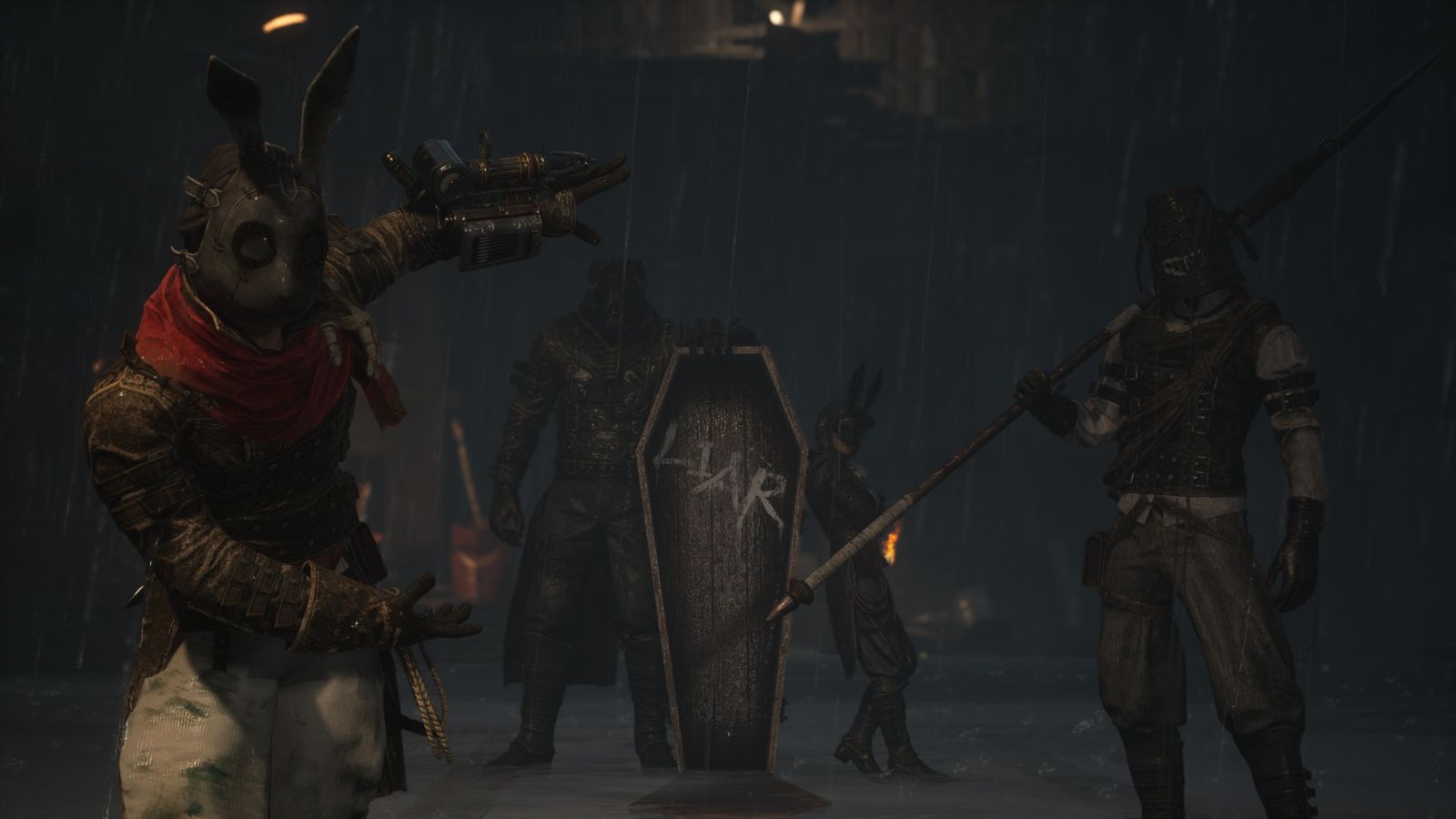
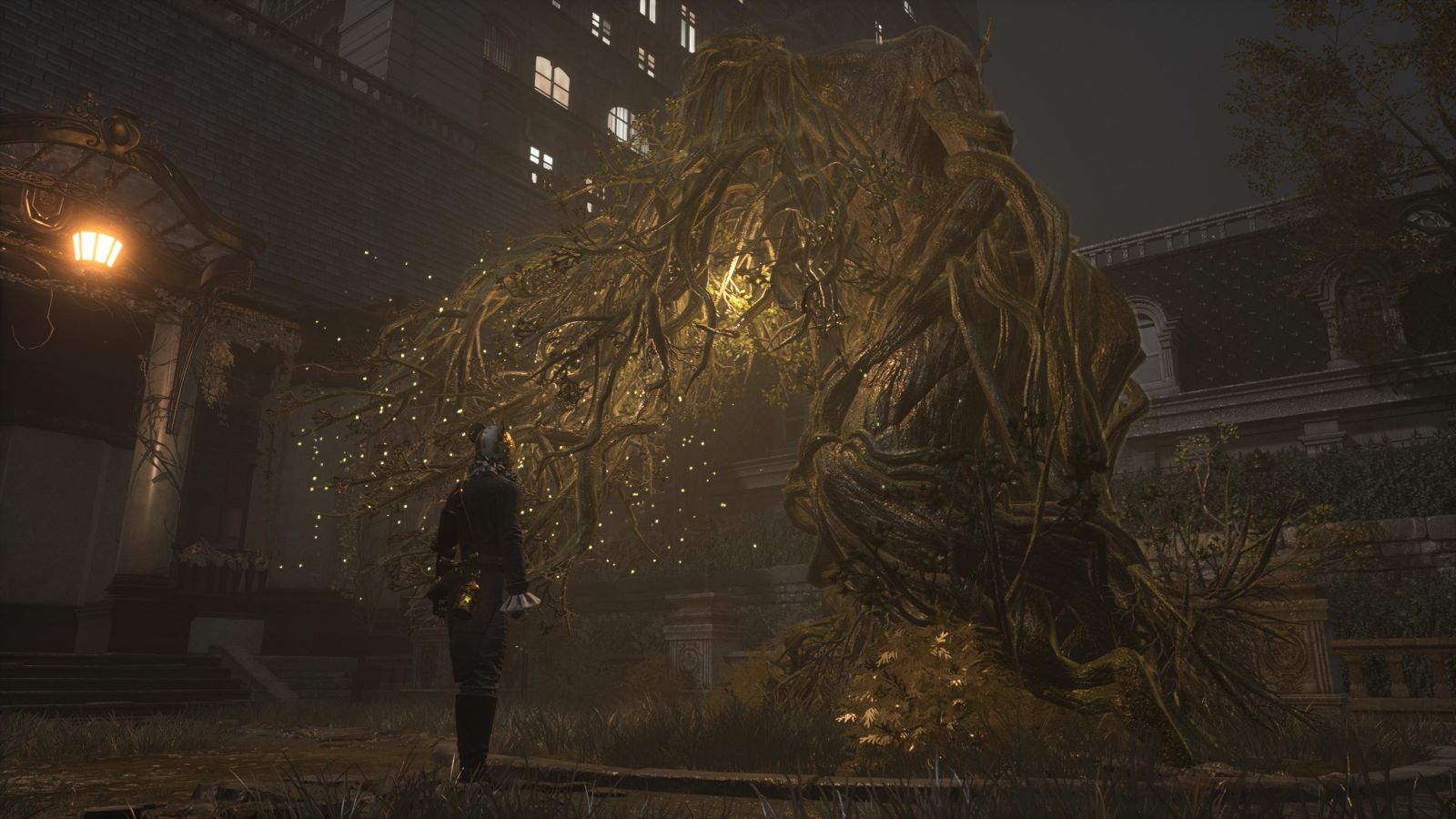
Obviously, some people will swap weapons often and test each to figure out what play style suits them best despite my above gripe, but I tend to stick to a tried-and-true weapon and upgrade it into oblivion. That said, I did start messing around the further in I got, but never felt too comfortable straying too far from my massively upgraded greatsword. But for those who enjoy experimenting with new weapons, you’re in for a treat. There is quite a large range of melee weapons to be found throughout the game, ranging from daggers to blunt instruments to massive greatswords, normally hidden in hard-to-find places, behind tough enemies, or for sale through shady merchants. Most melee weapons consist of a blade and handle, many of which can be disassembled and combined with other blades or handles to create new weapons with different abilities, though some special weapons may come in only one piece. Each blade and handle comes with its own Fable Arts, a unique ability which builds up as you land hits on enemies, and stats. Blades can be upgraded using ergo and special items, while you can use cranks to change the attributes of handles to better scale with your stats. Eventually, ergo obtained from defeating certain bosses can be used to purchase unique boss weapons or amulets if you so choose.
Your legion arm, which is your mechanical left arm, may not seem like much at first glance, but becomes an integral part of your arsenal quickly as it can also be swapped and upgraded. You begin with a basic legion arm that can punch extremely hard but do little else, which is nice for the initially tough enemies you’ll encounter, but you’ll quickly move on when new options present themselves. Eventually you’ll find legion materials and will be able to construct new arms or modify your existing arms to deal more damage or gain new abilities. Legion arms can be used to execute a wide range of helpful special attacks such as creating electrical blasts, becoming a flamethrower or spraying acid, placing mines, and launching small explosives. They have limited usage which can be regained by using items or by resting at stargazers, but are handy when dealing with particularly tough bosses or enemies.
P can attack using a basic or strong attack, with the right combination often resulting in stunning an enemy, allowing you to go in for a fatal blow. Fatal blows aren’t always, well, fatal, but they cause a massive amount of damage. Learning to time your blocks is integral to succeeding, or at the very least, making succeeding far less difficult than it needs to be. Blocking uses your stamina but will reduce damage, or outright negate damage if you trigger a perfect guard via blocking immediately before a hit. Being hit while blocking will slightly reduce your health, but successfully landing attacks on the enemy immediately after will allow you to regain that lost health. Enemies do sometimes use fury attacks, which cannot be blocked and must be avoided. These are simple enough to prepare for, as the enemy turns red beforehand, though they often are fast and have long reaching effects. Thankfully after you encounter a tough enemy, you can refill your health using pulse cells, which can be recharged when resting at a stargazer and can be upgraded for more uses as the game progresses.
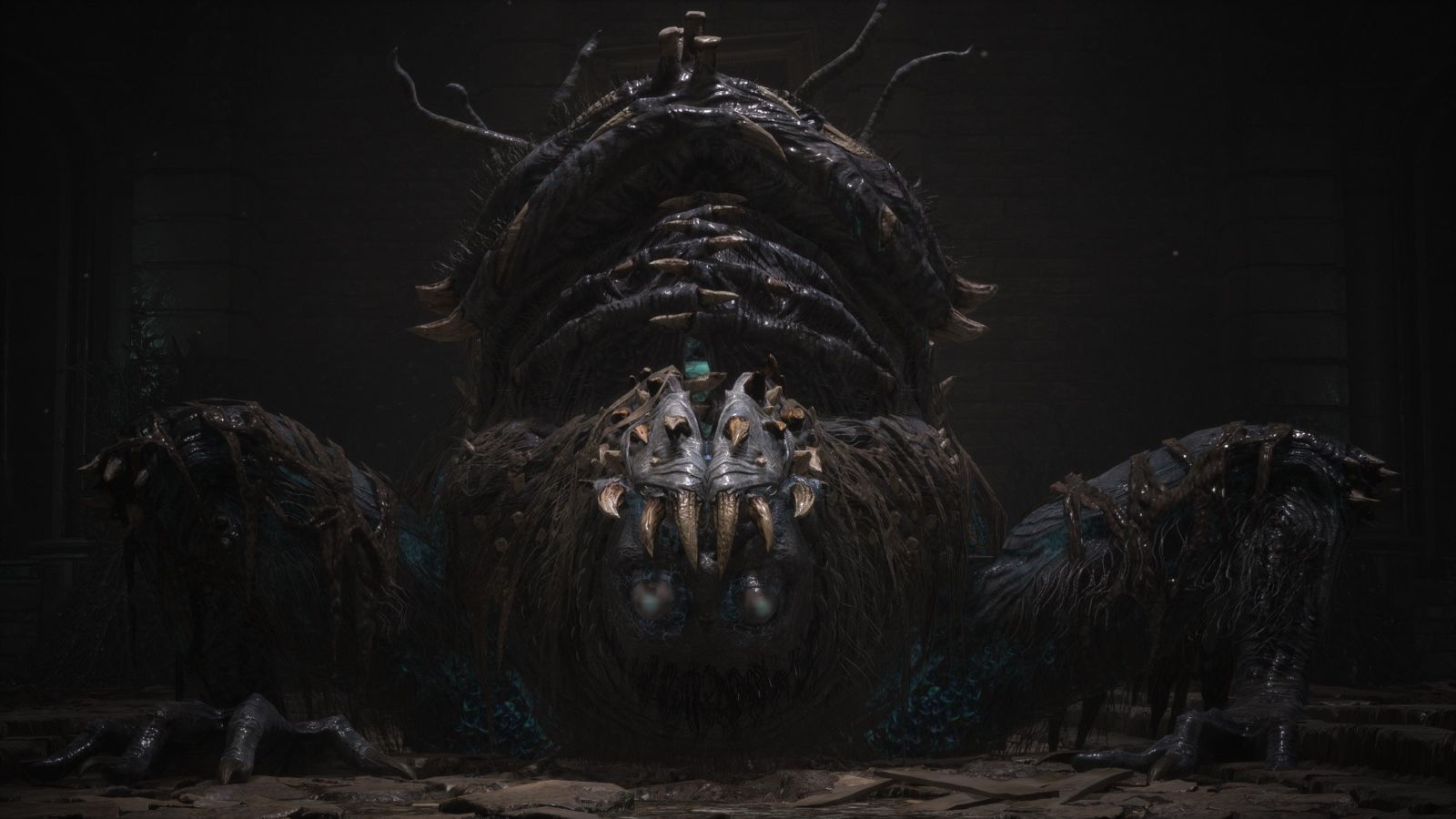
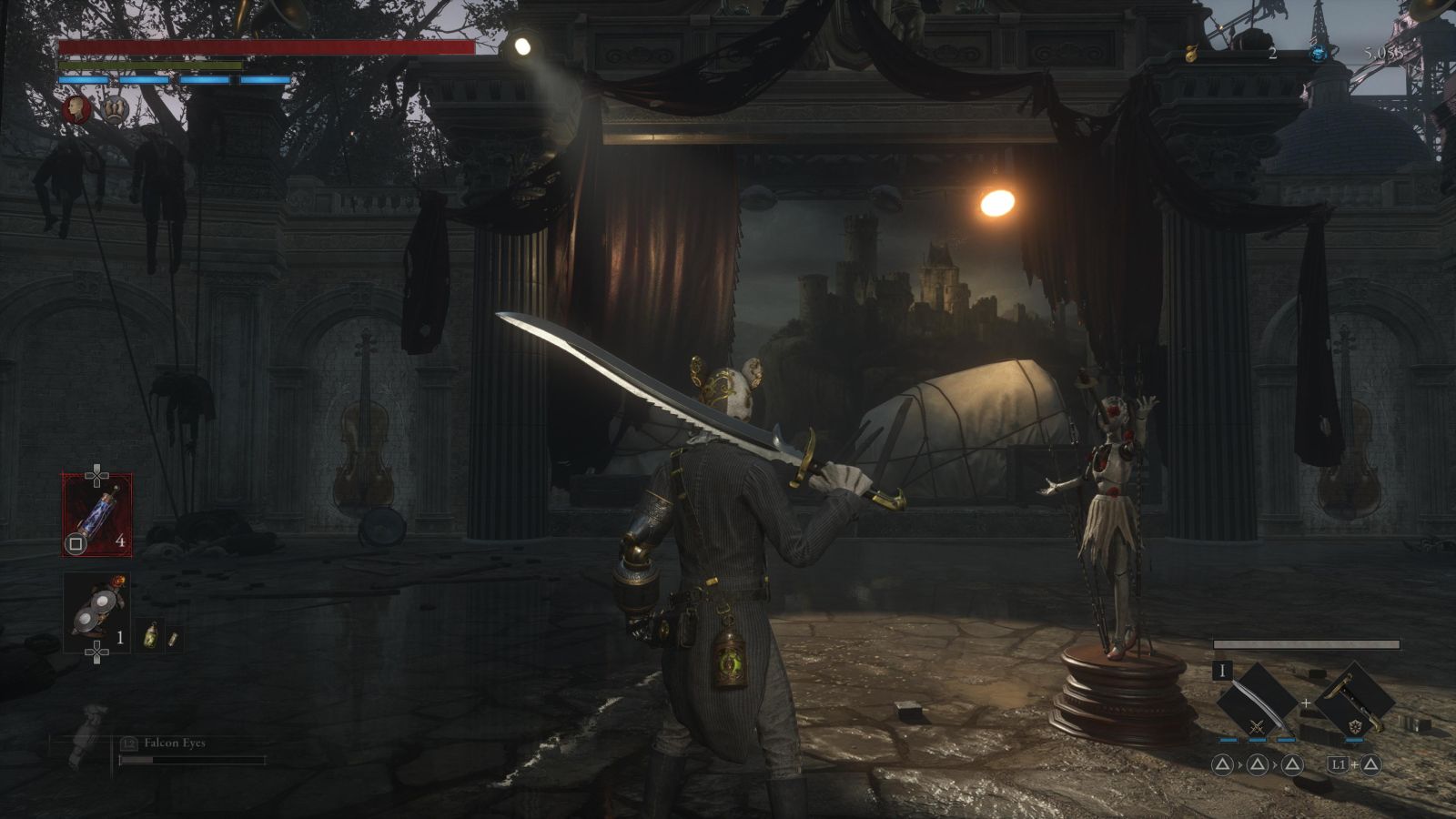
P is capable of running and jumping, but he can only jump while sprinting, and he can’t jump from a standstill or while regularly walking. That said, jumping is rarely used in the game, though there are a few gaps or traps you may need to leap over to proceed or to reach a hidden chest. P is also capable of sneaking up behind enemies to land fatal attacks, with the level design often inviting you to explore in hopes of finding ways to ambush a gang of hostiles if you’d rather not confront them head on.
Actually, speaking of level design, most areas of Lies of P are fantastically designed. Taking another page from the original Dark Souls, many areas eventually bleed into each other and ultimately back to Hotel Krat, which serves as your central hub, lending a strong sense of accomplishment to your exploration and creating many “a-ha” moments when you realize what you’ve unlocked. Likewise, each area tends to have shortcuts which can be unlocked to help with the traversal back to a stargazer, again adding a sense of accomplishment to your exploration.
I’d be remiss if I didn’t speak about weapon durability, which may be a sticking point for some, but rarely becomes an issue in practicality to the point I’m not sure why it was included as a mechanic at all. Each weapon has a set durability and with each attack it slowly wears down. Status ailments such as acid, etc. can speed up the process, leading to a few intense moments if fighting off a boss that enjoys spewing out corrosive material or other hazards. Fear not though, as you can simply sharpen your blade at any time using the provided grinder. The grinder can be placed on your belt and used by simply holding in a button, often fixing your blade in a manner of seconds. Later in your adventure the grinder can also be used to imbue your weapon with fire, acid, electric, and other elements, which was a pleasant surprise. While I enjoyed being able to add elements to my weapon, I often wondered why the durability was implemented at all. Most times you will reach a stargazer well before the weapon’s durability gets too low, instantly repairing it, or it just becomes an afterthought that you absently-mindedly take care of while exploring. As it is though, it’s not an issue that hurts the game in any quantifiable way.


I’ve mentioned ergo and stargazers, so I should probably explain what each is. Ergo is the material which powers all puppets. Each time P defeats an enemy, he will absorb their ergo, which can then be used to level up at a stargazer. Ergo can also be used to purchase items or can be gained by selling items or finding ergo fragments. Stargazers serve as Lies of P’s version of the Souls’ series bonfire and are found scattered throughout the world. Once activated, stargazers can be used to switch out your legion arm, grinder abilities, or wishstones, and to also recharge your pulse cells, fast travel, and more. Not all options are available at first, but the stargazers’ abilities will expand as you progress through the campaign. Of course, In typical Soul’s fashion, resting at a stargazer will revive all enemies in an area, save for bosses and some mini-boss type enemies. Using a stargazer, you can fast travel back to Hotel Krat to level up or to speak with the various NPCs you’ve encountered. As you progress, so will Hotel Krat, unveiling more useful items and upgrades. When choosing where to fast travel to you can see any areas where an event is taking place, along with what item in your inventory, if any, is needed for that event. Beyond that though, the game will not tell you exactly where to go, it is up to you to figure out how to initiate that event.
There are events which trigger due to your in game actions and there are side missions you can accept along the way. Most side missions involve simply finding an item and returning it, though often the item is in a completely different location so it may be hours before you stumble upon it. You are rewarded for completing these quests, sometimes with rare items, though many times the reward was nothing of consequence. I mainly completed all quests and events due to my fascination with the game and wanting to see every possible story, but you can just as easily ignore many of the side quests and events if you’d rather focus solely on the main campaign.
Aside from side quests there are records to find, cryptic vessels to decipher, gestures to learn, and riddles to solve. Cryptic vessels must be deciphered by an NPC to provide you with hints as to a secret location, which you must then find for a reward. Records can be listened to at Hotel Krat to receive humanity points. A strange individual who calls himself the King of Riddles keeps contacting you on the phone and forcing you to make quick choices to solve his riddles in order to obtain keys, and gestures can be used when interacting with NPCs and statues to elicit special responses. There’s a ton of stuff to uncover for those who like to hunt.
You must return to Hotel Krat anytime you want to level up, aside from the beginning of the game before the hotel is unlocked and during a few other moments during the campaign. When leveling up you can upgrade your Vitality (HP and guard regain), Vigor (stamina), Capacity (legion and weight), Motivity (physical attack, damage reduction), Technique (physical attack), and Advance (legion and defense/resistance). All stats will increase your defense. Weapons scale with Motivity, Technique, or Advance and you can level up based on that or use cranks on your handle to switch the stat that a weapon scales with.
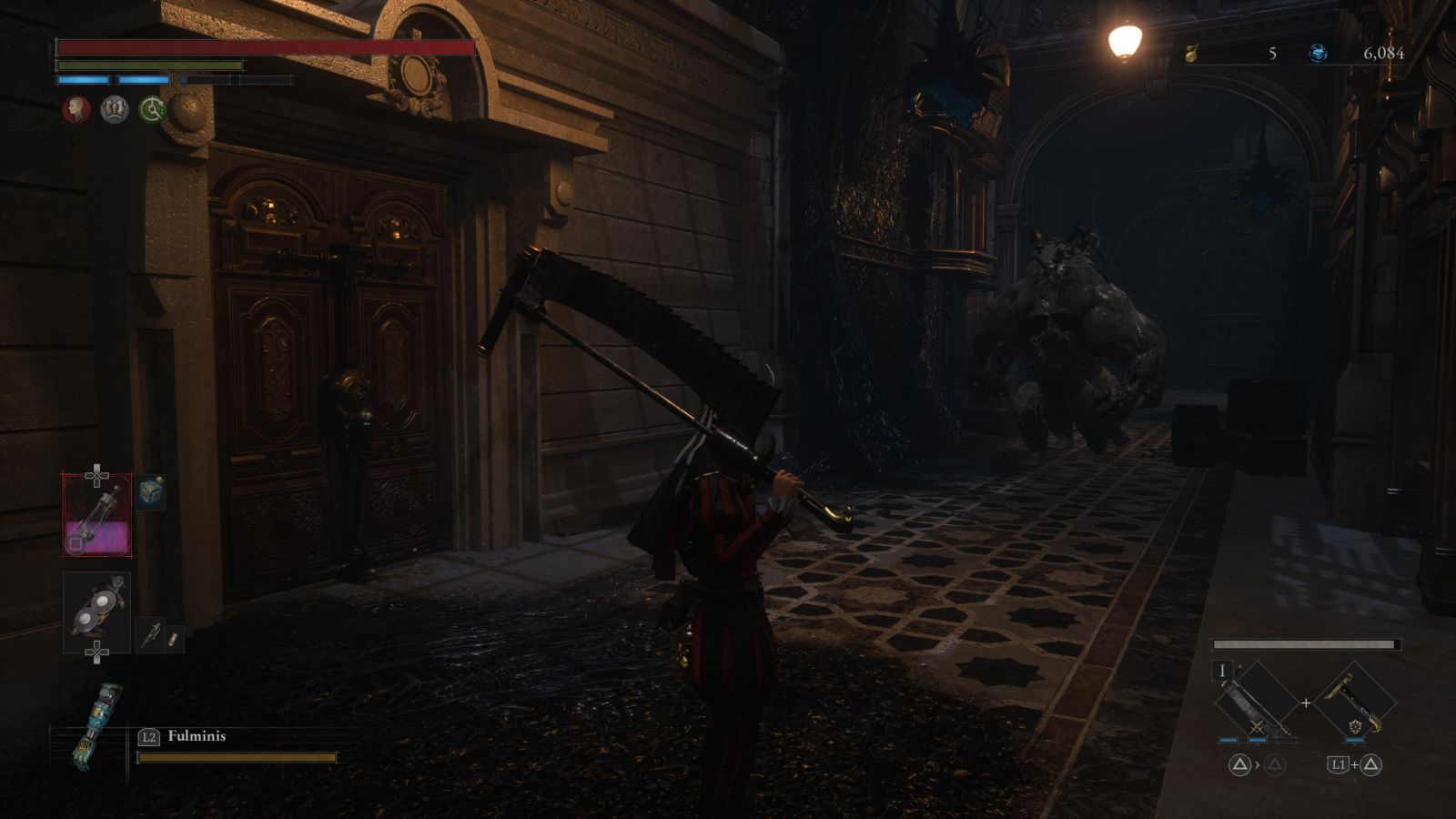

Throughout your adventure you’ll encounter an impressive variety of enemies and bosses, each of which can be challenging on their own and downright deadly in packs. Thankfully, Lies of P shines in the combat department by providing the player with a plethora of weapons and fighting styles to master all while dutifully teetering on the precarious edge of being challenging enough to be fun, but not so challenging that it becomes tedious – usually. There were a few bosses and enemies that tested my patience, especially towards the end of the game when the boss fights became more frequent and the paths to reach them more perilous, but I found that by taking my time, learning the enemies’ move sets, and grinding out a couple of level ups or upgrades I would eventually gain the upper hand. It helps that stargazers are normally near boss arenas and that dying to a boss will leave your dropped ergo outside the arena for easy retrieval. This allows you to tackle a fight repeatedly without fear of losing much, relieving much of the frustration that can stem from repeated fights against the same enemy. You can also summon an AI controlled specter to fight alongside you during a few of the boss encounters by using star fragments, an item you can purchase or can be found as a drop. The specter can be quite helpful, mainly because he can distract the boss, providing you with a few precious moments to attack or heal.
There are a slew of bosses to take down, ranging from simple boss fights which often occur out of nowhere, to optional boss fights you may stumble upon while exploring, to two phase boss fights which must be completed to proceed. I found the smaller boss fights to be just as worthwhile as the larger fights, with many of the smaller fights – particularly those against a human rather than a puppet monstrosity – to be refreshing. Humans have different move sets and are often quick, but don’t hit as hard, leading to a different play style being required to take them down.
All that combat could easily become monotonous, if it weren’t for the fantastic enemy and boss design and variety. I was constantly impressed with the wide range of enemies I encountered, and how often new enemies would crop up. Anytime you begin to feel comfortable with the enemies and develop a false sense of security, Lies of P will throw something new and often horrific at you. I don’t know how many times I was carelessly slicing through basic enemies and running down a hallway only to turn a corner and immediately backtrack because I ran into some new monstrosity that looked like it could eat me in one bite. There is seriously an incredible range of enemies for a game of this type, and I had a blast figuring out the best methods to tackle each.
Defeating bosses or stumbling upon secret chests can often lead to acquiring a quartz, which can then be used via the P-Organ, which allows you to update P in a number of ways, from adding a new dash mechanic, updating pulse charges or the stagger window, or even forcing certain in-game events to occur more often. Each choice made also provides additional unlockable abilities, from earning more ergo, to higher weapon durability, to better guard regain, and a slew of other helpful options. The P-Organ is an interesting upgrade mechanic and quartz are rare enough that finding one remains exciting throughout. You’ll find yourself debating for long periods over which skill to upgrade or which slot to use, as you will have no idea when you’ll stumble upon the next quartz stone.
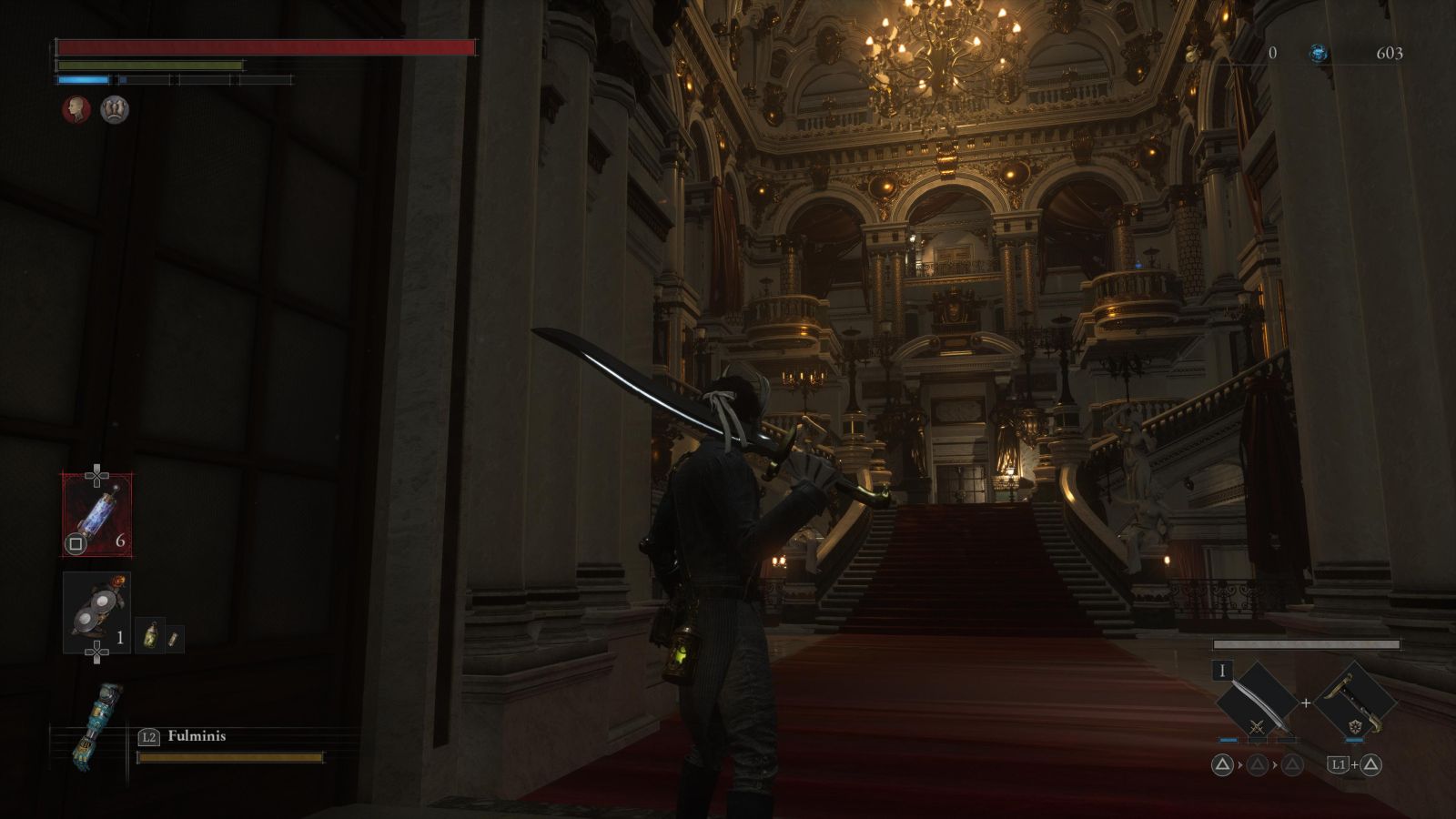
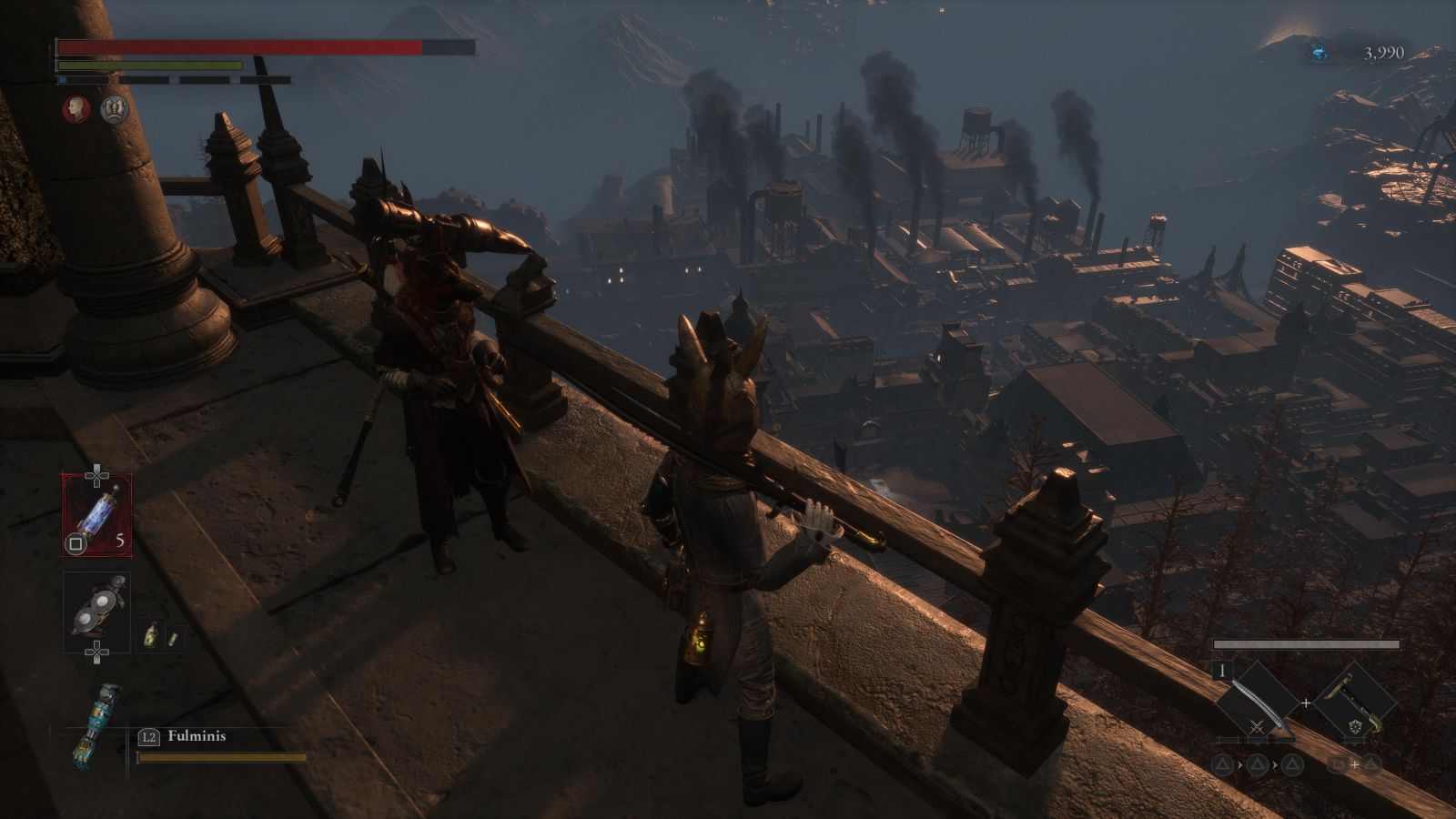
The P-Organ also has a “change shape” option, which ended up being much less interesting than I had expected. You can really only use it to switch between P’s hair styles, which update a bit during the game. I normally wore masks, so I didn’t bother using the change shape option aside from once just to see if it did anything else. But for those who care about cosmetics, you may get some use out of it.
One of Lies of P only negatives is that there is no online component to invite other players to help you out with an area or a boss, or in which you can help other players. I do feel that this is a glaring missed opportunity as it would actually solve my other issue with the game, the grinding required if you need to quickly move up a few levels to reach a specific stat or to just be better prepared for a tough enemy. Repeated run throughs of an area for ergo can get repetitive, especially since basic enemies rarely drop much, but being able to help someone with bosses they are struggling with would have been a fun way to earn that extra ergo while adding an additional layer of replayability to an already fantastically replayable game. Ah well, maybe I am just spoiled by the Souls formula.
Lies of P’s graphics are consistently impressive, with detailed and varied locales to visit and a slew of grotesque enemies to defeat. Each level is packed with details, ranging from bodies or puppets strewn about, to places on fire, old signs from before the town’s collapse, or just remnants of the chaos which has occurred. While a few of the lesser NPCs you encounter are stiffly animated, they are so few and far between that you barely notice. The game moves at a buttery smooth frame rate and never once stutters or shows any sign of not keeping up with the often-chaotic action on screen.
There are multiple endings, and even an intense boss fight which only occurs if you make a specific choice. Thankfully, Lies of P does have a New Game+ option which carries over all your weapons, amulets, armor, outfits, and stats allowing you a chance to make different choices and possibly unlock a different ending. The only things not carried over are the merchant inventory expansions that you find during the game and your records. When beginning a New Game+ cycle you are given the option to reset the P-Organ or to keep your upgrades. No matter your choice, a new phase is added to the P-Organ, further allowing you to customize P. I didn’t get a chance to play too far into New Game+ to see if there are any substantial changes, but from what I played it was exactly the same, aside from enemies being much stronger and awarding higher amounts of Ergo.
I fell in love with Lies of P nearly immediately, but sometime around the moment I was traversing a poisonous swamp, while fighting two optional bosses and dodging basic enemies, all while being shot at from an overhead canon capable of taking half my health in a single hit – led me to realize that Lies of P was going to instantly earn a place on my favorite games list. The pure sense of accomplishment I felt from using all I had learned to survive and take out all the enemies, before even attempting to eliminate the cannon, is something I haven’t felt in a long while. That accomplishment stuck with me throughout the nearly 40 hours I spent exploring Krat, taking down twenty or so bosses, exploring every nook and cranny, and completing every side quest I encountered.

















